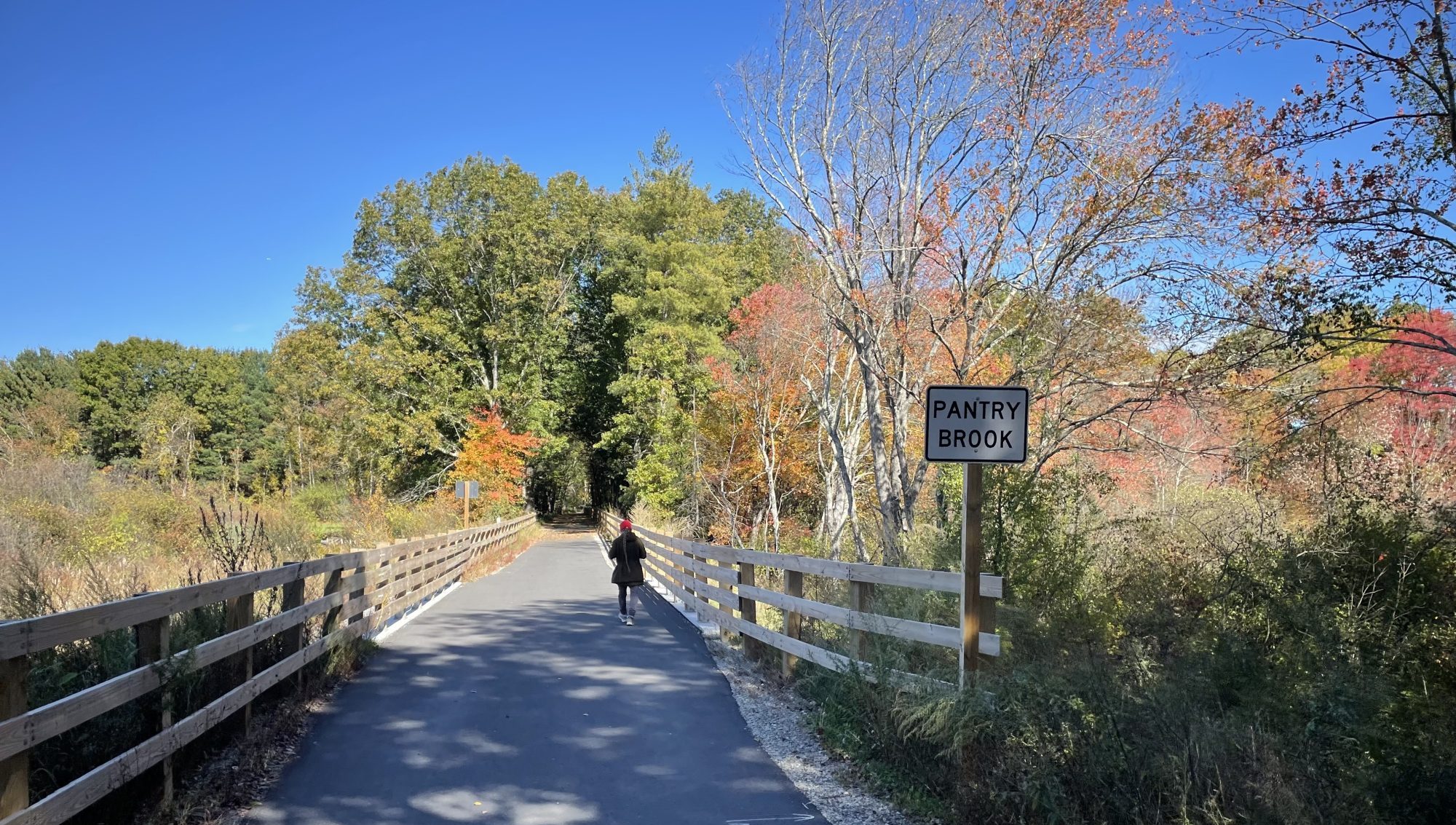
The Town of Brookline is evaluating a proposal to dedicate new bus lanes on a short but congested section of Washington Street between Brookline Village and the Riverway near the Boston city line.

Washington Street has recently been completely rebuilt as part of the town's "Gateway East" project, which has been under construction for a year and a half. The project (pictured above, in December) rebuilt the street and sidewalks, realigned intersections, and added new protected bike lanes that give bike riders a safe connection between Brookline Village and the Emerald Necklace bike paths.
The reconstruction project was originally designed 4 to 5 years ago, before bus lanes became widespread in the Boston region, with a cross-section that includes 5 to 7 lanes for general motor vehicle traffic.
Now, before construction formally ends, planners are revisiting that design, and are proposing to convert the curbside lane to a bus-only lane in each direction, between the Green Line's D branch track crossing and the Riverway at the Boston city line.

Though these bus lanes would be relatively short – just over 1,000 feet long in each direction – they would benefit the town's busiest bus corridor, a heavily-congested bottleneck where three routes – including the 66, the MBTA's second-busiest route – converge between Boston and Brookline Village (see map at right).
The Brookline Transportation Board has hosted two virtual public hearings on the concept this month.
At the most recent meeting, on December 14, Andrew McFarland, an MBTA planner, reported that nearly 17,000 people typically rode buses through this short segment of Washington Street every weekday before the pandemic. During the morning peak traffic period, approximately one in four people traveling on Washington Street are riding a bus.
Later in the same meeting, the Transportation Board invited members of the public to weigh in, and although there were skeptics of the plan, public testimony generally favored the proposal.
Supporters included Rep. Tommy Vitolo, who represents Brookline Village and North Brookline in the Massachusetts House of Representatives.
"An urban area that is truly welcoming – to elders, people of color, children, people with disabilities, and the poor – must have good mass transit, including, in this case, (route) 60, 65, and 66 buses that arrive on time, are properly spaced, and keep things moving for passengers," said Rep. Vitolo, who also added that he's a regular rider of the 65 and 66 bus routes.
Several speakers referenced the Town of Brookline's climate policies, which call for at least 75 percent of the town's trips to be made by human power, transit, or electric micromobility devices (e.g., scooters, e-bikes, or electric wheelchairs) by 2050.
"Many people have spoken for their desire for a Brookline where more people can live car-free. This requires better access to speedy and reliable transit," Brookline resident Mary Rose Fissinger told the Transportation Board. "The only way to eventually reduce traffic here and elsewhere in Brookline is by giving people a viable option to get around without a private vehicle."
A vote on the bus lane proposal could be scheduled at the Transportation Board's January meeting.






